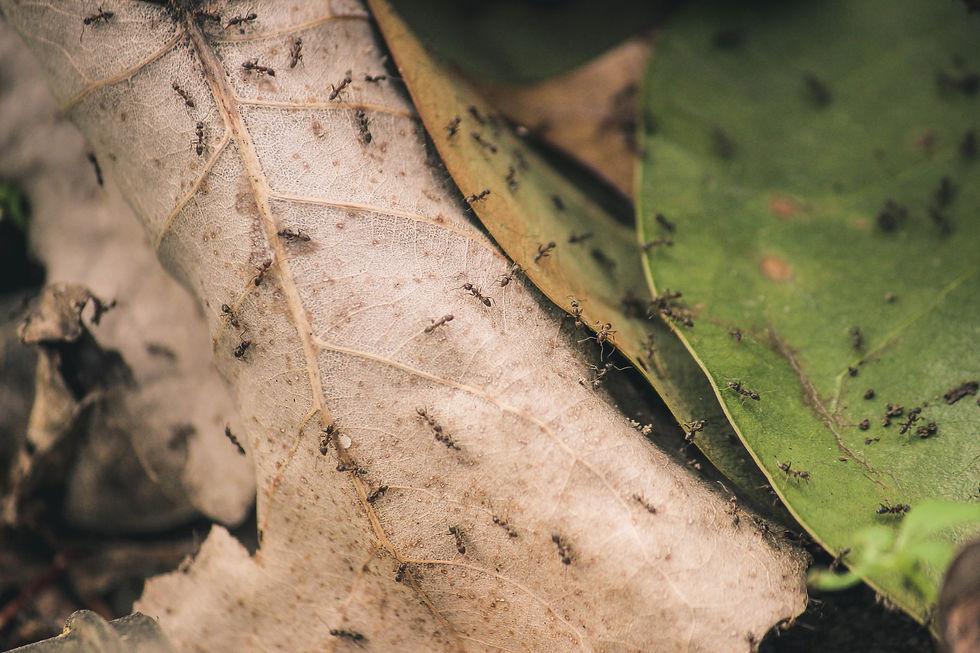Ants are Amazing
- Richard

- Jun 9, 2018
- 2 min read
Ants are amazing. We see them every day, paying them no mind. As we go about our day, we undoubtedly step on many of them. Would we do this if they cried out or vocalised in some way, like other animals do? It's an interesting ethical point to ponder.
(As it turns out, we don't know enough about their neural systems to know if they feel pain similar to the way we do. At the least, we observe nociception: responding to damaging or potentially damaging stimuli - a clear evolutionary advantage.)
One thing we do know is that their biomass outnumbers ours; we estimate there to be 10,000 to 100,000 trillion, found everywhere except for the coldest climates. A true marvel of biology, they can lift between 10 and 50 times their bodyweight – that's akin to the average person lifting a large car! There's also enormous variation in size, with the smallest being less than 1mm in length; the largest up to 4cm.

The next time you see an ant nest, try expanding and slightly blurring your focus. So pronounced is the cooperation among individuals, you may recognise the structure as one amorphous single "organism" with complementary parts working for its survival. At the head of this body we find between one and ten queens (there is no king). It's possible for queens to live decades. Males are called drones, sterile females are workers. Curiously, ants have no blood vessels or lungs; oxygen enters and leaves the body through an array of tiny holes. Seasonally, winged fertile males and females are produced for the purpose of spreading. Mating occurs mid-air – quite the feat!

If an ant is separated from the colony, it will try to find its way back, or die trying. Moving in concentric circles, it will use pheromone trails to do attempt this; the profile of which is unique to each colony. Research has shown that ants count steps, so the distance to the nest, all things being equal, is known by the drone or worker. In addition, communication may occur with other ants through body language.
Appreciating this knowledge, perhaps we will think differently of these industrious creatures the next time we see them. They are a wonder of nature, integral to the web of life of which we are a part.
🐜
Much of what we know about ants is due to the work of famed biologist Edward O. Wilson. Perhaps his most influential work is Biophilia, outlining how our humanity is built upon a natural affinity for life. We encourage you to find out more here: https://amzn.to/2JnXT8X






Comments